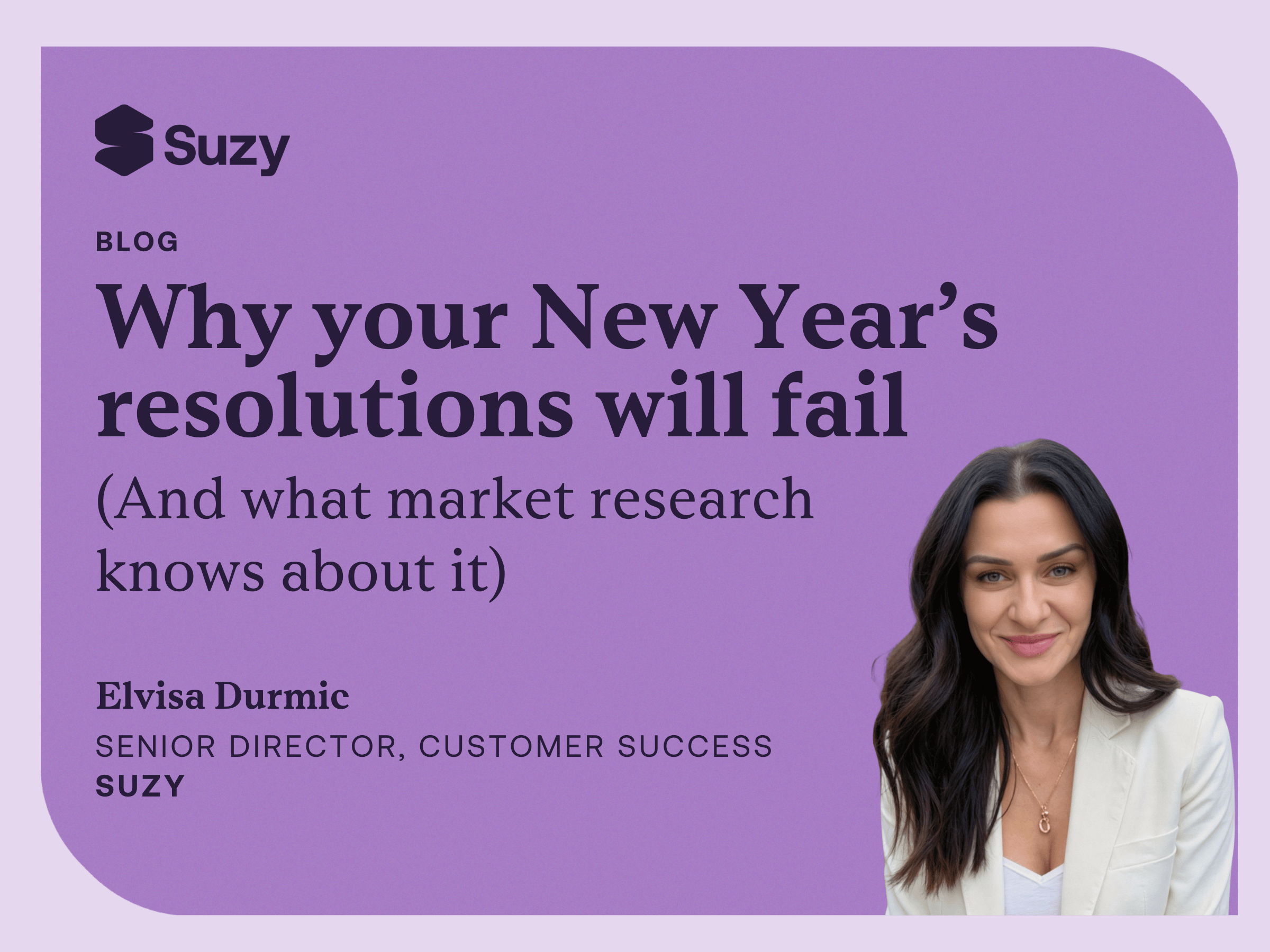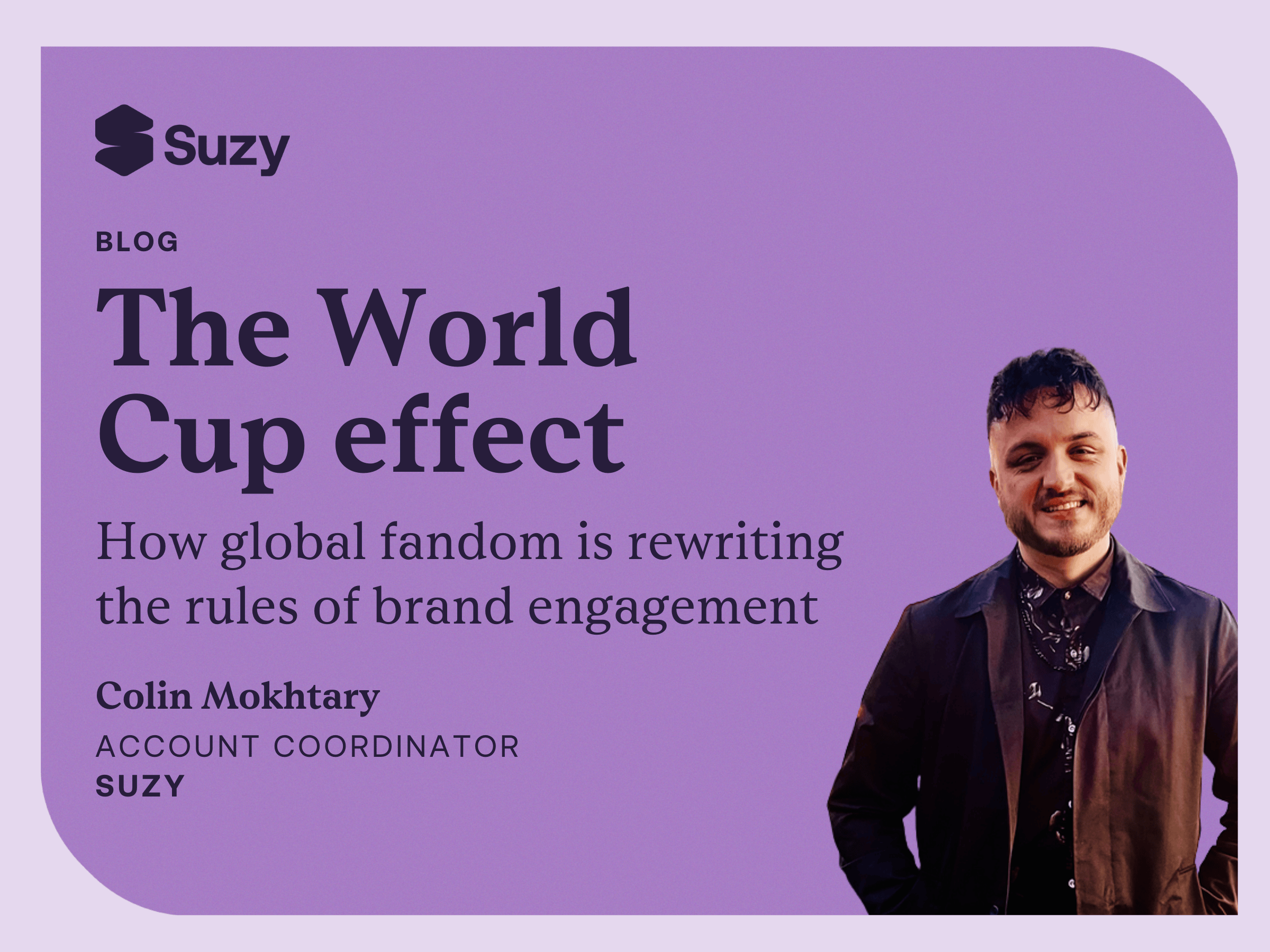By: Amy Frankenthaler, Associate Customer Success Manager
Will GLP-1 Medications make an impact on your industry? In this post, we will be addressing how this new class of medications is revolutionizing industries, reshaping brands, and making us all rethink our approach to health and wellness. Let's explore how this blockbuster weight-loss drug is not only changing lives but also creating seismic shifts across multiple sectors, take a look at some questions you could ask to learn about consumer behaviors, attitudes, and perceptions of GLP-1 medications. Let’s dive in and see how your business can stay ahead of this evolving phenomenon!
The Ozempic Phenomenon
Originally designed to treat diabetes, Ozempic (and its sibling drugs like Wegovy, Zepbound, and Mounjaro) has shown impressive weight-loss benefits. These drugs work by mimicking a gut hormone called GLP-1, which makes you feel full faster and longer, thus helping people lose weight more effectively than many traditional methods.
Why should you, your brand, AND your industry care about a weight-loss drug? Because GLP-1 medications are not just a fad—they are a game-changer. With obesity affecting 42% of U.S. adults (CDC), the demand for effective weight-loss solutions is sky-high. Currently, 66% of Americans trying to lose weight say that willpower alone isn't enough to move the needle on the scale. And when a solution like Ozempic and other GLP-1 medications come along, it doesn't just help individuals; it creates ripple effects across multiple if not all, industries.
Impact on the Food and Beverage Industry
Let's start with the obvious one: the food and beverage industry. As Ozempic and similar drugs reduce cravings and overall food intake, people eat fewer unhealthy foods. This shift is pushing companies to rethink their product lines.
Example: Chipotle and Nestlé
Fast-casual restaurants like Chipotle, known for their generous portions and calorie-rich meals, are likely to re-evaluate their menus to offer more health-conscious options. Meanwhile, packaged food companies like Nestlé, famous for their sugary snacks, are already working on healthier alternatives and supplements to cater to the new demand. Some brands are launching new lines of frozen foods targeting users of GLP-1 drugs.
What you could ask consumers: "How has the usage of GLP-1 drugs influenced your purchasing decisions for food and beverage products?"
Fitness and Wellness Boom
As people lose weight, they often become more interested in maintaining a healthy lifestyle, which means a boom for the fitness and wellness industry. Luxury gyms and fitness clubs are tailoring their programs to help people on weight-loss medications maintain muscle mass and overall fitness. What are consumers eating more or less of? What are they looking for on the ingredient label?
Example: Equinox and Peloton
High-end gyms like Equinox have already shifted their strategies to reframe exercise around rapid weight loss and muscle density, offering personalized training programs for those on GLP-1 drugs. This not only helps clients achieve their fitness goals but also ensures they stay healthy and fit. Similarly, Peloton may see increased demand for its at-home fitness solutions as people strive to maintain their weight loss. Weight loss companies that experienced a slight dip in the past few years post-Covid weight loss companies are doubling down on their GLP-1 programs, some even partnering with telehealth companies to provide the medication.
What you could ask consumers: "What types of fitness programs or services do you find most helpful while using GLP-1 medications for weight management?"
Pharmaceutical and Healthcare Sectors
The pharmaceutical and healthcare industries are perhaps the most directly impacted. With the soaring popularity of GLP-1 drugs, companies are ramping up production and exploring new applications for these medications, from treating diabetes, cardiovascular, and renal diseases to addressing co-morbidities like drug/alcohol addiction, sleep apnea, fertility, hormonal diseases, Parkinson's disease, and new ones every day.
Example: Novo Nordisk and Eli Lilly
Pharmaceutical companies like Novo Nordisk and Eli Lilly have announced significant investments to increase the production of their GLP-1 medications, reflecting the massive demand and potential growth (with a growing list of new indications for these medications) in pharma and healthcare. It will be interesting to monitor the types of procedures that are becoming more popular with GLP-1 users and if surgeries, in general, become most accessible to this population.
What you could ask consumers: "What additional health benefits would you like to see from GLP-1 medications?"
Impact on the Health Insurance Industry
The surge in GLP-1 drug prescriptions is significantly impacting the health insurance industry. Insurers are facing challenges in covering these expensive medications, often costing around $1,000 per month. This has led to varied coverage policies, with some insurers implementing strict criteria for reimbursement. As more people seek these treatments, insurers are exploring strategies to manage costs while ensuring patient access.
Example: Insurance Providers
Insurance providers like UnitedHealthcare, Aetna, Elevance Health, and Cigna are constantly reassessing their coverage policies for GLP-1 drugs, balancing the need to manage costs with the demand for these effective weight-loss medications. Medicare and Medicare Part D seem to be in an interesting position for approval of coverage depending on the indication. Some are introducing prior authorization requirements and step therapy protocols to control usage.
What you could ask consumers: "How do health insurance coverage policies influence your decision to use GLP-1 medications for weight management?"
Fashion and Apparel Industry
You might not immediately think of the fashion industry, but it too is feeling the Ozempic effect. As people lose weight, their clothing needs change, leading to a shift in demand for different sizes and styles.
Example: Retailers and Apparel Brands
Retailers like Macy's and apparel brands like Levi's are rethinking their size curves and inventory management. According to Impact Analytics, not adjusting to this shift could lead to significant financial losses, as the demand for larger sizes may decrease.
What you could ask consumers: "How has your clothing size and shopping behavior changed since starting a GLP-1 medication?"
Entertainment and Media
Let's not forget Hollywood and social media, where discussions about GLP-1 medications and weight loss are rife. Celebrities openly discussing their use of these drugs bring the conversation to the mainstream, influencing public perception and increasing interest in weight-loss solutions.
Example: Celebrity Influence
When a high-profile individual like Elon Musk tweeted about using Wegovy, it caused a surge in public interest and search results. Similarly, jokes about these drugs at major events like the Oscars highlight their cultural penetration.
What you could ask consumers: "How do celebrity endorsements of weight-loss drugs influence your perception of these medications?"
Cultural Shifts Towards Healthy Living
Beyond the immediate effects on specific industries, GLP-1 medications are fostering a broader cultural shift towards healthier eating, diet, and exercise. The COVID-19 pandemic has already accelerated this shift, with more people focusing on their health and wellness and even to the level of reading the ingredients in their foods. As more people experience significant weight loss, there's a growing emphasis on maintaining that weight loss through healthy habits.
Example: The Wellness Industry
The wellness industry is seeing a surge in demand for products and services that support a healthy lifestyle. From meal delivery services like Daily Harvest offering balanced, nutritious meals to wellness apps like MyFitnessPal providing personalized fitness plans, to even specialized vitamins and supplements, the focus is shifting towards long-term health and wellness.
What you could ask consumers: “How have GLP-1 medications shifted your attitudes towards wellness and nutrition? Are you focusing on the long-term benefits of different wellness and nutrition products?”
Companies Tracking GLP-1 Usage with Suzy
As the popularity of GLP-1 drugs rises, companies are beginning to track usage and behaviors around these medications to get ahead and start ideating on new products. By understanding consumer behavior, brands can develop targeted strategies that are critical in resonating with their audience's evolving needs and preferences. Be one of the many companies tracking GLP-1 trends with trackers.
Example: Data-Driven Product Development
Brands are leveraging tools like Suzy to gather real-time insights on how consumers are integrating GLP-1 drugs into their lifestyles. This data helps companies tailor their product offerings, marketing strategies, brand positioning, and customer experiences to align with not only the new health and wellness trends but also the momentous cultural shifts from COVID-19 to GLP-1 medications.
What you could ask consumers: "What new products or services would you like to see from brands in response to the increasing use of GLP-1 medications?"
Why Brand Authenticity and Voice Matters
In the Ozempic era, it's more important than ever for brands to remain authentic. As consumers become more health conscious and aware of the benefits and risks of weight-loss drugs, they will look for brands that align with their values and provide transparent, genuine solutions. Authenticity builds trust, fosters loyalty, and sets brands apart in a crowded market. By staying true to their mission and openly communicating their commitment to health and wellness, brands can connect more deeply with their audience. Consumers are listening to your brand positioning and voice.
Brands should look at the barriers to access to this medication. Are there certain populations benefitting from GLP-1 medication access than others? Can everyone afford this medication class? Is it available to everyone? What are the emotional and functional drivers behind those who use GLP-1 medications and those who don’t? Your brand has a voice to a specific consumer, optimize that voice, and stay true to your brand identity.
Conclusion
Now, before we wrap up, let's not forget a significant portion of the population still leaning toward traditional weight loss methods. According to our research, approximately 34% of people are familiar with Ozempic or similar medications, and around 10% have taken a GLP-1 for weight management. But there's a growing movement toward natural and holistic approaches, emphasizing diet, exercise, and mental wellness.
These changes and the addition of GLP-1 medications represent a SIGNIFICANT shift towards a healthier, more holistic society. Reducing obesity rates can lead to fewer chronic diseases, lower healthcare costs, and a better quality of life for millions. Brands need to pay attention and innovate accordingly.
The GLP-1 Medication era is here to stay by reshaping industries, driving innovation, and fostering a cultural shift toward healthier living. From food and fitness to fashion and pharmaceuticals, the ripple effects of these weight-loss drugs are far-reaching. By staying informed and adapting to these changes, businesses can not only survive but thrive in these uncharted waters.
Curious about how these evolving trends and cultural shifts could impact your business? Just ask Suzy!
.webp)





.png)

